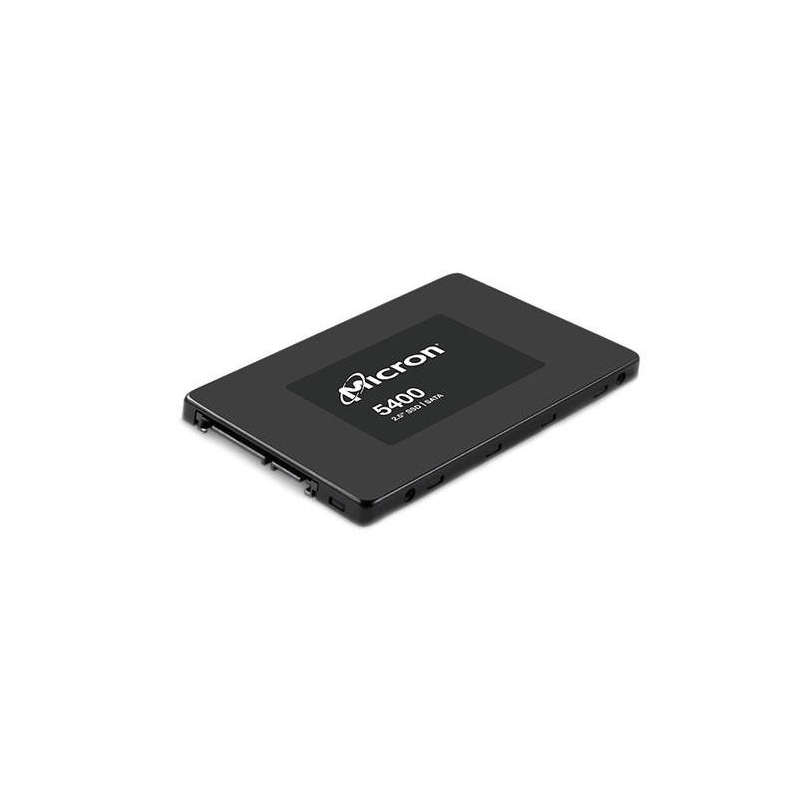
Lenovo 4XB7A82260 2.5-inch 960GB Serial ATA III 3D TLC NAND Internal SSD
Check my rate
| Main centres: | 1-3 business days |
| Regional areas: | 3-4 business days |
| Remote areas: | 3-5 business days |

| Main centres: | 1-3 business days |
| Regional areas: | 3-4 business days |
| Remote areas: | 3-5 business days |
Lenovo 4XB7A82260 2.5-inch 960GB Serial ATA III 3D TLC NAND Internal SSD
The ThinkSystem 5400 PRO Read Intensive SATA 6Gb SSDs are general-purpose self-encrypting SSDs (SEDs) based on the Micron 5400 PRO platform and are available in capacities ranging from 240GB to 7.86TB. They are engineered for greater performance and endurance in a cost-effective design, and to support a broader set of workloads.
This product guide provides essential presales information to understand the 5400 PRO SSDs, their key features and specifications, components and options, and configuration guidelines. This guide is intended for technical specialists, sales specialists, sales engineers, IT architects, and other IT professionals who want to learn more about the 5400 PRO SSDs and consider their use in IT solutions.
The 5400 PRO SSDs have the following features:
SSDs have a huge but finite number of program/erase (P/E) cycles, which affect how long they can perform write operations and thus their life expectancy. Read Intensive SSDs typically have a better cost per read IOPS ratio but lower endurance and performance compared to Mixed Use SSDs. SSD write endurance is typically measured by the number of program/erase cycles that the drive can incur over its lifetime, which is listed as total bytes written (TBW) in the device specification.
The TBW value that is assigned to a solid-state device is the total bytes of written data that a drive can be guaranteed to complete. Reaching this limit does not cause the drive to immediately fail; the TBW simply denotes the maximum number of writes that can be guaranteed. A solid-state device does not fail upon reaching the specified TBW. However, at some point after surpassing the TBW value (and based on manufacturing variance margins), the drive reaches the end-of-life point, at which time the drive goes into read-only mode. Because of such behavior, careful planning must be done to use SSDs in the application environments to ensure that the TBW of the drive is not exceeded before the required life expectancy.
For example, the 5400 PRO 960GB drive has an endurance of 2,628 TB of total bytes written (TBW). This means that for full operation over five years, write workload must be limited to no more than 1,440 GB of writes per day, which is equivalent to 1.5 full drive writes per day (DWPD). For the device to last three years, the drive write workload must be limited to no more than 2,400 GB of writes per day, which is equivalent to 2.5 full drive writes per day.
All ThinkSystem 5400 PRO Read Intensive SATA 6Gb SSDs support drive encryption.
Self-encrypting drives (SEDs) provide benefits in three main ways:
The following sections describe the benefits in more details.
Automatic encryption
It is vital that a company keep its data secure. With the threat of data loss due to physical theft or improper inventory practices, it is important that the data be encrypted. However, challenges with performance, scalability, and complexity have led IT departments to push back against security policies that require the use of encryption. In addition, encryption has been viewed as risky by those unfamiliar with key management, a process for ensuring a company can always decrypt its own data. Self-encrypting drives comprehensively resolve these issues, making encryption both easy and affordable.
When the self-encrypting drive is in normal use, its owner need not maintain authentication keys (otherwise known as credentials or passwords) in order to access the data on the drive. The self-encrypting drive will encrypt data being written to the drive and decrypt data being read from it, all without requiring an authentication key from the owner.
Drive retirement and disposal
When hard drives are retired and moved outside the physically protected data center into the hands of others, the data on those drives is put at significant risk. IT departments retire drives for a variety of reasons, including:
Nearly all drives eventually leave the data center and their owner's control. Corporate data resides on such drives, and when most leave the data center, the data they contain is still readable. Even data that has been striped across many drives in a RAID array is vulnerable to data theft because just a typical single stripe in today's high-capacity arrays is large enough to expose for example, hundreds of names and bank account numbers.
In an effort to avoid data breaches and the ensuing customer notifications required by data privacy laws, companies use different methods to erase the data on retired drives before they leave the premises and potentially fall into the wrong hands. Current retirement practices that are designed to make data unreadable rely on significant human involvement in the process, and are thus subject to both technical and human failure.
The drawbacks of today's drive retirement practices include the following: